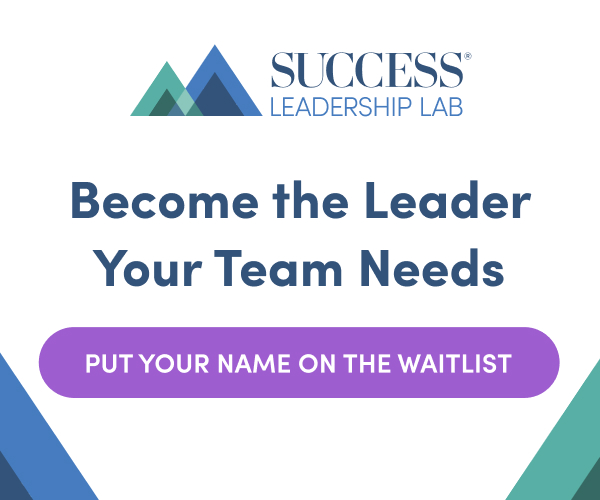In a world where business success depends not only on financial performance but on the health and happiness of its workforce, human sustainability has emerged as a key priority. The term refers to creating an environment where employees can thrive, both personally and professionally, without burning out or feeling undervalued. With increasing recognition of the link between employee well-being and long-term business success, leaders are under pressure to put their people at the heart of company strategy.
Yet, despite widespread acknowledgment of its importance, only 12% of organization executives are truly leading in this area, according to a Deloitte global study. That leaves a vast gap between intention and action.
If you’re working in a mid-level role or managing a team, you’re likely already feeling the impact of this disconnect: work stress, increased pressure from automation and uncertainty about the future. The good news is that intentional steps toward a people-first culture can help reduce stressors and create a more sustainable, productive work environment.
Why organizations don’t do human sustainability
Despite its importance, human sustainability often remains an abstract concept within many organizations. One major reason is that sustainability efforts can seem like long-term investments without immediate payoffs. Executives may feel the pressure to prioritize quarterly results without investing in the systems and processes that support human sustainability.
Additionally, there’s a widespread misconception that building a sustainable workplace requires large financial investments. In reality, many of the most effective strategies—such as fostering open communication, creating a culture of feedback, and balancing workloads—require little more than intentional effort and a shift in leadership mindset. Still, this shift is challenging because it often involves breaking old habits and restructuring the way people work.
In an international survey conducted by Deloitte, 80% of CEOs acknowledged the importance of human sustainability in driving their organization’s long-term success. Yet only a small percentage have taken actionable steps to lead in this area. This gap affects company culture and the bottom line. Businesses that fail to create environments where employees feel supported may struggle with high turnover rates, decreased morale and reduced productivity.
Employee burnout, automation and job security
For employees, the lack of focus on human sustainability translates directly into increased stress, uncertainty and disengagement. Many feel overwhelmed by workloads and anxious about the growing influence of automation and AI on their roles.
Millennials and Gen Zers, in particular, place a high value on purpose-driven work and are likely to leave a company that doesn’t align with their values or support their personal development, according to the Deloitte survey.
Automation only adds to this stress. As industries rapidly adopt AI and machine-learning technologies, employees fear being replaced. This uncertainty about the future leaves workers anxious and disengaged. For organizations that want to retain top talent, addressing these concerns through human sustainability efforts is no longer optional—it’s essential.
Human sustainability addresses these challenges by ensuring that employees aren’t just surviving at work but thriving. A people-first culture helps improve coping capabilities and prepares your workforce for innovation and automation by investing in upskilling and lifelong learning initiatives that empower employees to adapt and grow alongside technological advancements.
For example, encouraging team members to use AI or other innovations to improve processes and jobs equips them with the mindset and skills needed to embrace, rather than reject, technology that enhances their own performance.
6 ways to create a culture of human sustainability
If you’re a mid-level manager or employee looking to foster a culture of human sustainability within your organization, you don’t need to wait for directives from the top. There are practical steps you can take today to move your organization in the right direction:
1. Start with values alignment
A sustainable workplace begins with shared core values. Mid-level managers can play a crucial role by ensuring their teams understand and align with the organization’s core values. This alignment provides a strong foundation for decision-making, helps teams stay focused on shared goals and increases overall engagement.
However, values can’t just live on the company website—they must be embedded into how teams work day-to-day. For example, a company that values innovation should empower employees to experiment, take risks and fail without fear of reprimand. A core value that would exemplify the behavior you encourage in this case might be “grow or die.”
2. Foster open communication
One of the biggest drivers of work-related stress is the lack of communication between employees and leadership. Open communication creates transparency and reduces uncertainty, helping employees feel more secure and valued. Regular check-ins, team huddles and anonymous pulse surveys are effective ways to encourage feedback and create a culture of openness. Being relational in words, actions and behaviors fosters this culture throughout the organization, starting with leadership.
HubSpot, a software company, exemplifies this approach. They regularly hold “ask-me-anything” (AMA) sessions, where employees can anonymously ask senior leadership questions—no topic is off-limits. This transparency fosters trust, lowers stress and makes employees feel their voices are heard.
3. Balance skill development with new challenges
Research has shown that employees are happiest when they are challenged just enough to feel growth without becoming overwhelmed—something I call the “skills/challenge balance.” This balance is crucial for sustaining employee motivation and engagement. Managers can address this by frequently assessing individual workloads and development opportunities and keeping a pulse on this over a team member’s development journey quarterly.
Highlighting this balance is important, as too little challenge leads to boredom and too much can cause stress and disengagement. Use quarterly reviews to ensure that team health is solid and members are in the “sweet spot”—constantly growing but not overwhelmed.
4. Leverage cognitive and behavioral assessments for better fit
Many organizations miss the mark by placing employees in roles that don’t match their natural abilities or strengths. This is where cognitive and behavioral assessments can be extremely useful, such as the Kolbe index or CliftonStrengths. These tools help managers understand how employees approach problem-solving and handle tasks, ensuring they are placed in roles where they can thrive. For example, someone who excels in a high attention to detail, fact-finding research position may struggle in a fast-paced sales role, even if they have some of the necessary skills.
By leveraging these assessments, companies have seen significant improvements in employee satisfaction and productivity. Placing the right person in the right role is crucial to unlocking potential and driving long-term success.
5. Prioritize work-life balance and flexibility
For millennials, flexibility is a requirement. Flexible work arrangements, such as remote work options and flexible hours, help employees manage their personal lives alongside their professional responsibilities. Work-life harmony is critical to human sustainability because it directly impacts employee health and happiness.
Unilever, for example, has been at the forefront of flexible work policies. The company offers something called U-Work, where employees get a monthly retainer and benefits but work different assignments when needed. In between assignments, they can take breaks to do other things, like travel or work at other jobs. This approach helps retain top talent and enhances productivity as employees feel more empowered and in control of their time.
6. Lead with your heart
Heart-centered leadership, a concept I champion, emphasizes leading with genuine care and concern for your team. It’s about showing empathy, listening actively and creating an environment where employees feel supported. This type of leadership is essential for human sustainability because it fosters trust and connection, which are key to employee retention.
Companies that lead with heart tend to see higher levels of engagement and loyalty. Patagonia is a key example of this approach. Known for its strong environmental mission, Patagonia also prioritizes its people by offering generous benefits, including paid time off for activism. This heart-centered approach builds a culture of loyalty and commitment among employees.
Ensuring human sustainability lasts at your company
Building a sustainable, people-first culture doesn’t happen overnight. It requires ongoing effort, intentionality and a commitment to change. The key is focusing on long-term benefits over short-term gains. As a mid-level manager or employee, you play a crucial role in making this shift happen.
Here are additional steps to ensure a lasting impact:
- Implement continuous feedback loops: Regular feedback allows for constant growth and improvement. Create systems where feedback is normalized, both from leadership and among peers.
- Invest in employee development: Offer training programs, mentorship opportunities and support for employees to continue learning. This not only benefits the company but also prepares employees for the challenges of tomorrow.
- Celebrate wins: A culture that celebrates success fosters positivity and engagement. Make it a point to recognize both individual and team accomplishments regularly.
The expression “Culture eats strategy for breakfast” is appropriate here. For organizations truly committed to human sustainability, now is the time to act. By investing in your people, creating open lines of communication, and fostering a supportive environment, you’re enhancing the workplace and setting the stage for long-term success. Your company—and your teammates—will thank you.
Photo by: adriaticfoto/Shutterstock.com







